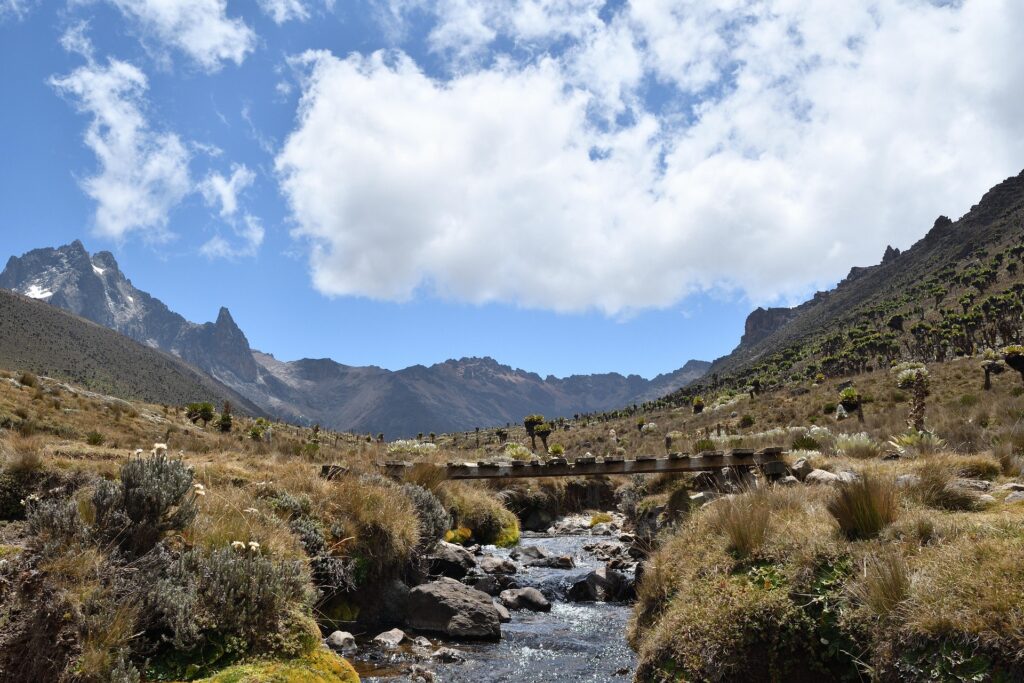If you are to think of Africa, Kenya is more likely to be the first place that pops up in your mind! This is the case for many other people around the world.
Kenya is an East African country that’s quite popular around the world! Now, there are many reasons for this; athletics, technology, and the massive online presence of Kenyans are among the top ones. However, none of these reasons make Kenya as popular as the way our travel industry does. This industry contributes about 11% of the Kenyan GDP, bringing in close to $6 billion in revenue.
The Maasai Mara National Reserve, Amboseli National Park, Tsavo National Park, and Diani Beach are among the biggest draws and the most visited places in Kenya. But did you know that there is so much more to this country than these places? I mean, there are so many other places you can visit that are often overlooked.
In this article, we are going to cover the top 7 most spectacular, yet overlooked, places to visit in Kenya that still showcase its diversity and beauty.
The best places to visit in Kenya for tourists
Karura Forest, Nairobi
This is the first recommended place to visit in Kenya. Just a short drive from Nairobi’s central business district lies Karura Forest. It is a rare and remarkable urban sanctuary that offers visitors a quiet and exciting experience in nature, without ever leaving the city.
For many international tourists, Nairobi serves as a gateway to Kenya’s famed national parks and reserves, but Karura provides a compelling reason to pause and explore the capital itself.
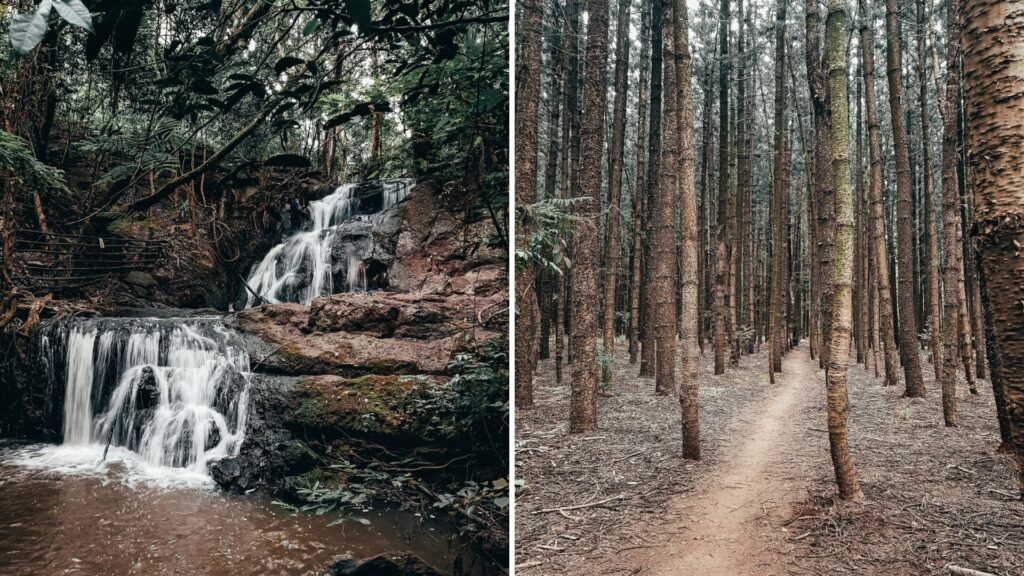
Spanning over 1,000 hectares, Karura is among the largest urban forests in the world. It features a well-maintained network of walking, jogging, and cycling trails that wind through indigenous woodland, shaded groves of bamboo, and open glades dotted with butterflies and birds. Along the way, visitors encounter scenic highlights such as waterfalls, a tranquil lily lake, and historical landmarks including caves used during Kenya’s fight for independence.
Beyond the forest’s ecological richness, it also has a deeply rooted historical and civic significance. In the early 2000s, the forest was the focus of a major conservation effort led by the late Professor Wangari Maathai, the Nobel Peace Prize laureate, whose work helped prevent the forest from being lost to illegal development. Today, Karura stands as a testament to environmental resilience and community advocacy.
So, if you want to experience a more nuanced and layered side of Kenya, you know beyond wildlife safaris, then you should definitely check out Karura Forest. It’s not only safe and easily accessible, but it’s also well-managed, making it an ideal destination for nature enthusiasts, families, and those with an interest in sustainable urban spaces.
Giraffe Manor, Nairobi
Located in the quiet suburb of Lang’ata, just 20 kilometres from Nairobi’s city centre, Giraffe Manor offers a highly specific and memorable experience: the chance to share your breakfast with a Rothschild’s giraffe. Not from a distance, and not on a scheduled tour, but right at your table, as the giraffes lean their heads through the open windows of the dining room.
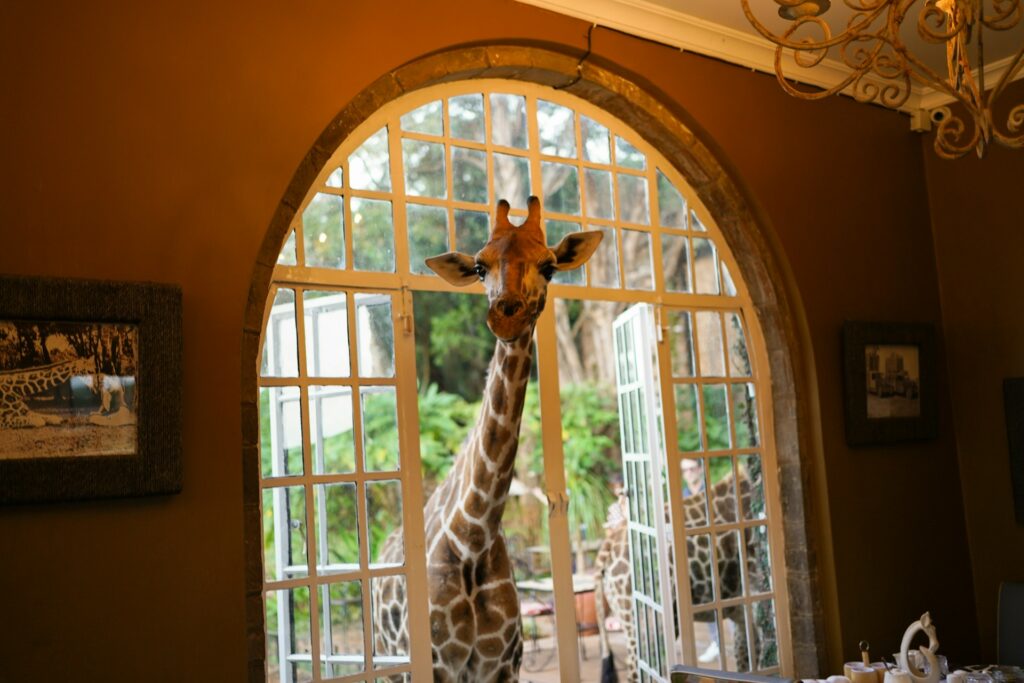
This ivy-covered manor, built in 1932, accommodates only a small number of guests at a time, making the experience feel personal and unrushed. The giraffes – part of a local breeding and conservation program – are not fenced off or kept at a distance. Instead, they roam freely on the property, and guests are encouraged to feed them specially provided pellets by hand. The interaction is calm, guided, and respectful of the animals.
Inside, the manor retains much of its original character, with antique furniture, polished wooden floors, and rooms decorated in a style that reflects colonial-era Kenya without feeling outdated. The service is discreet and attentive, and meals are freshly prepared using locally sourced ingredients. Although the giraffe interactions are the highlight, the experience as a whole is designed to be quiet, refined, and honestly quite exciting.
Staying at Giraffe Manor also supports conservation. The property is connected to the African Fund for Endangered Wildlife, and proceeds go toward protecting the Rothschild’s giraffe, one of the most endangered giraffe subspecies in Africa.
The Kenyan coast
When considering places to visit in Kenya, many travellers think first of national parks and wildlife. What often goes unnoticed – but should not – is Kenya’s coastline. Stretching over 500 kilometres along the Indian Ocean, the Kenyan coast is home to some of the most scenic, culturally rich, and accessible beaches in East Africa.
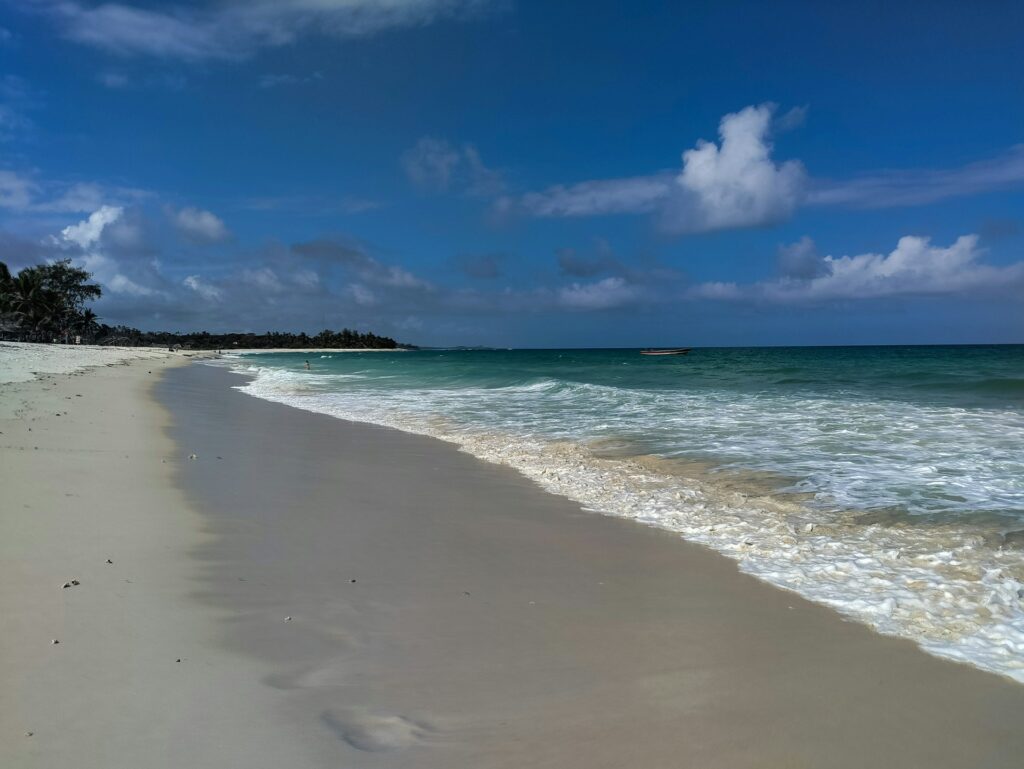
Diani Beach, located about 30 kilometres south of Mombasa, is one of the most popular beach destinations in the country. It offers clear turquoise waters, powdery white sand, and a long stretch of palm-lined shoreline. What sets Diani apart is its blend of relaxation and activity. Visitors can snorkel over coral reefs, kite surf, or take a boat ride to nearby sandbars, all while staying in beachfront lodges that range from simple guesthouses to high-end resorts.
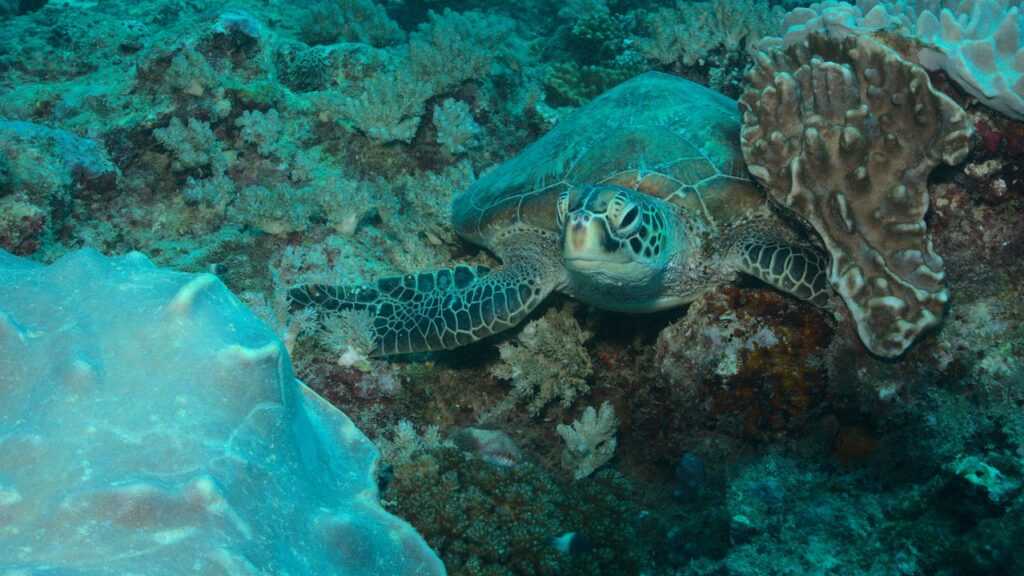
Further north, Watamu is a quieter option known for its marine biodiversity. The Watamu Marine National Park protects coral gardens and sea turtles, and it’s one of the best places in Kenya for snorkelling and diving. The town itself has a small, laid-back feel, and many of the lodges and eco-resorts are built with traditional Swahili-style architecture. Watamu also sits near the Gede Ruins, a 13th-century Swahili settlement hidden in the forest, adding historical depth to your beach visit.
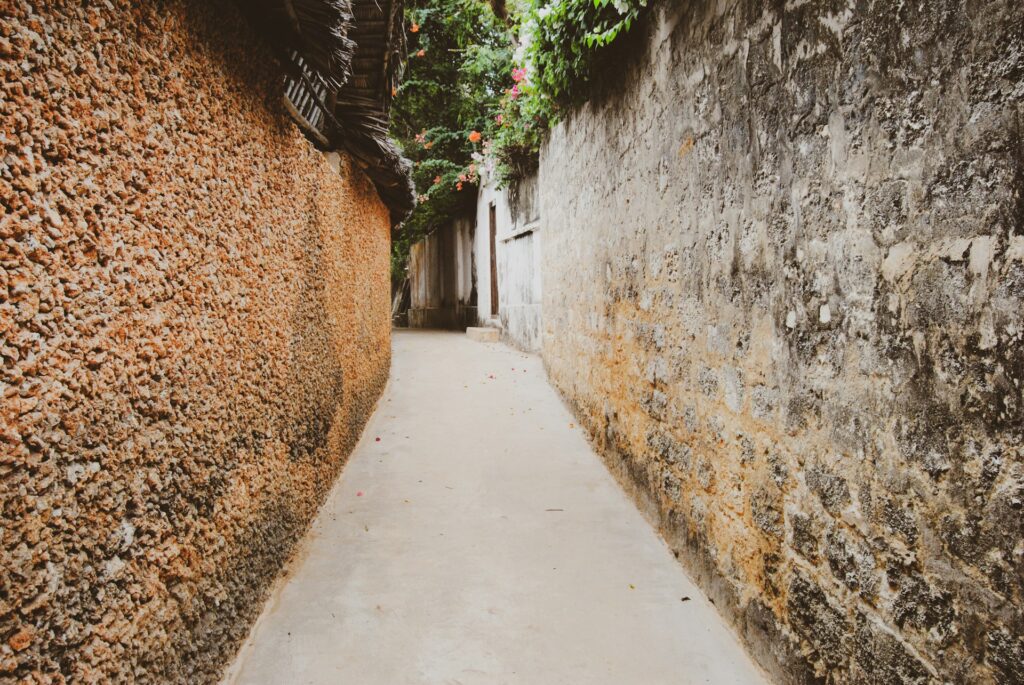
Then there’s Lamu Island, a UNESCO World Heritage Site that offers a different kind of coastal experience. Unlike Diani or Watamu, Lamu is not built for modern beach tourism. There are no cars – only donkeys and boats – and the town’s narrow streets, coral-stone buildings, and centuries-old mosques reflect a long history of Swahili, Arab, and Persian influences. All these places are safe and well-connected by domestic flights and roads.
Laikipia – the conservation stronghold
While it may not be the first name that comes up when searching for places to visit in Kenya, Laikipia is increasingly gaining attention among travellers looking for exclusivity, sustainability, and diverse wildlife experiences. Unlike most national parks, Laikipia is made up of privately and community-managed conservancies, each with its own identity and unique offerings.
Ol Pejeta Conservancy
Perhaps the most well-known of Laikipia’s conservancies, Ol Pejeta is a 90,000-acre reserve that offers one of the most complete wildlife experiences in Kenya. It is home to all of the “Big Five,” and is especially significant for conservation – it hosts the largest population of black rhinos in East Africa and is home to the world’s last two northern white rhinos.
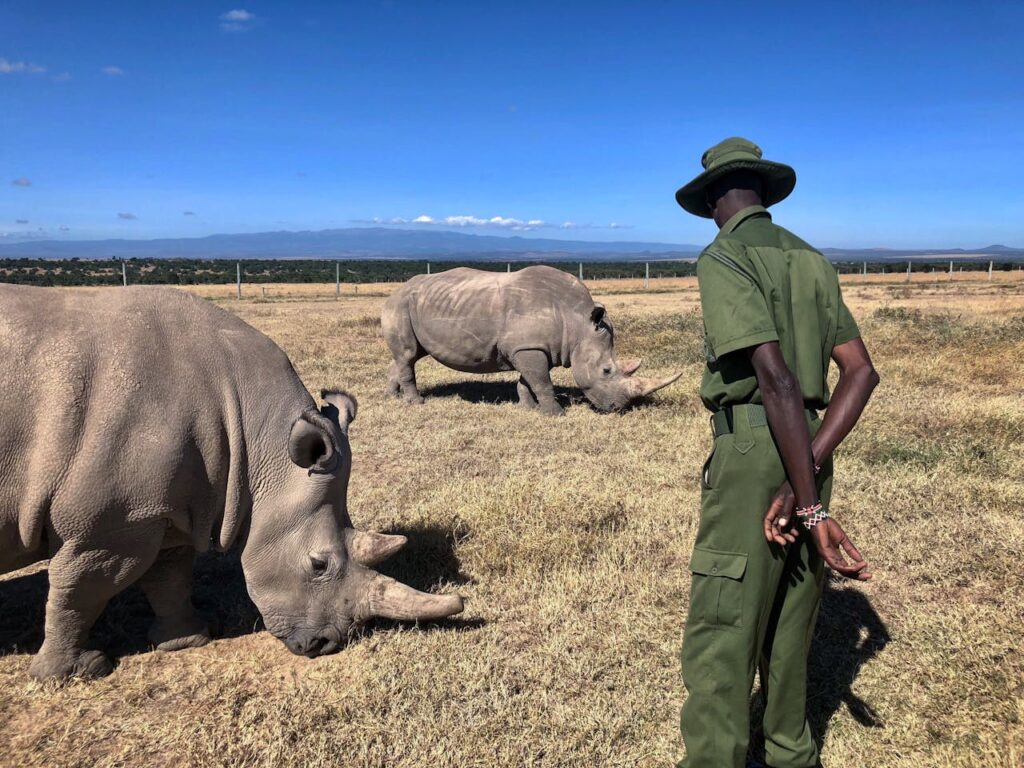
In addition, Ol Pejeta operates the only chimpanzee sanctuary in Kenya. Tourists can enjoy game drives, behind-the-scenes conservation tours, horseback safaris, and even spend a night in a safari camp with views of Mount Kenya.
Lewa Wildlife Conservancy
A UNESCO World Heritage Site, Lewa is known for its success in rhino conservation and for its role in community-focused tourism. The conservancy features high-end lodges like Lewa Safari Camp and Sirikoi Lodge, and it offers a more intimate safari setting with limited visitor numbers.
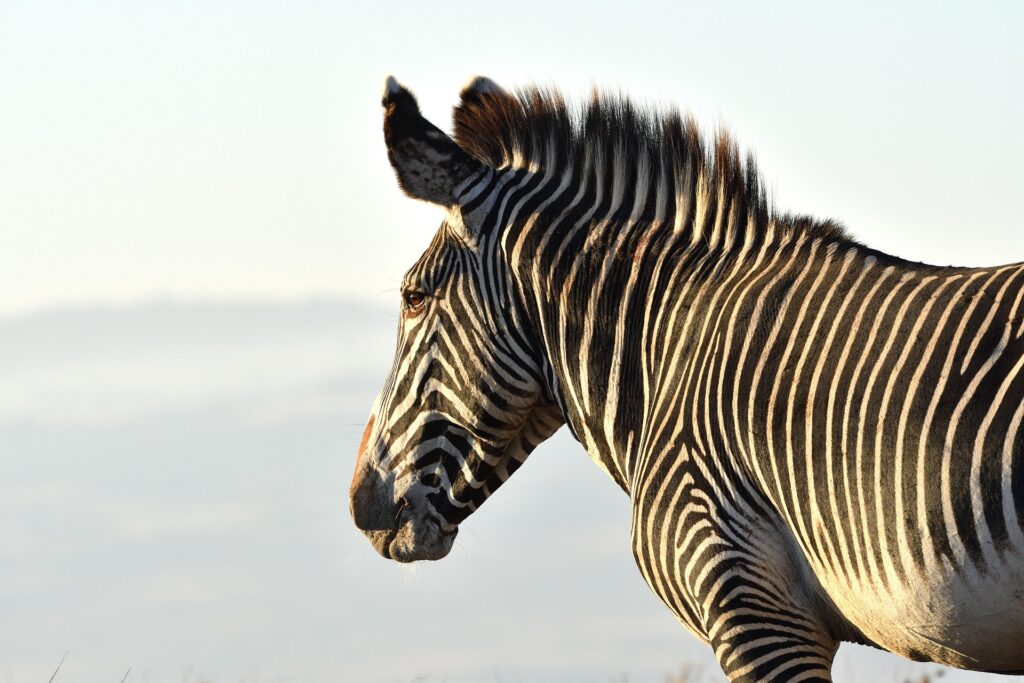
Beyond rhinos and elephants, Lewa is a stronghold for Grevy’s zebra and other endangered species. Guided bush walks, cultural visits to nearby Maasai communities, and scenic flights are also available.
Borana Conservancy
Bordering Lewa to the west, Borana Conservancy is another flagship conservation area that blends wildlife protection with sustainable cattle ranching. Borana offers fewer lodges and is ideal for guests seeking privacy and exclusivity. Activities include walking safaris, horse riding, mountain biking, and rhino tracking on foot with experienced rangers.
Loisaba Conservancy
Located on Laikipia’s northern edge, Loisaba combines luxury and wilderness seamlessly. It’s particularly known for its Star Beds, where guests sleep outdoors on raised platforms under the open sky. Wildlife sightings include elephants, big cats, and the increasingly rare African wild dog. The conservancy also supports local Samburu communities and offers camel treks guided by Samburu warriors – an experience unique to northern Kenya.
Ol Jogi Wildlife Conservancy
Ol Jogi is one of Laikipia’s most exclusive properties – privately owned and visited by appointment only. It serves as both a high-security wildlife refuge and a centre for endangered species breeding. Guests who visit (often via private charter) are treated to one-on-one wildlife encounters, including visits to their wildlife rescue centre, which rehabilitates animals that cannot survive in the wild.
Mount Kenya
Often overshadowed by the fame of Mount Kilimanjaro, Mount Kenya offers a quieter, more pristine, and in many ways more diverse mountain experience. Rising to 5,199 meters (17,057 feet), it is the highest mountain in Kenya and the second-highest in Africa. But Mount Kenya is not just for climbers – it’s a UNESCO World Heritage Site and a designated national park that offers a rare combination of alpine scenery, wildlife, cultural significance, and varied trekking routes.
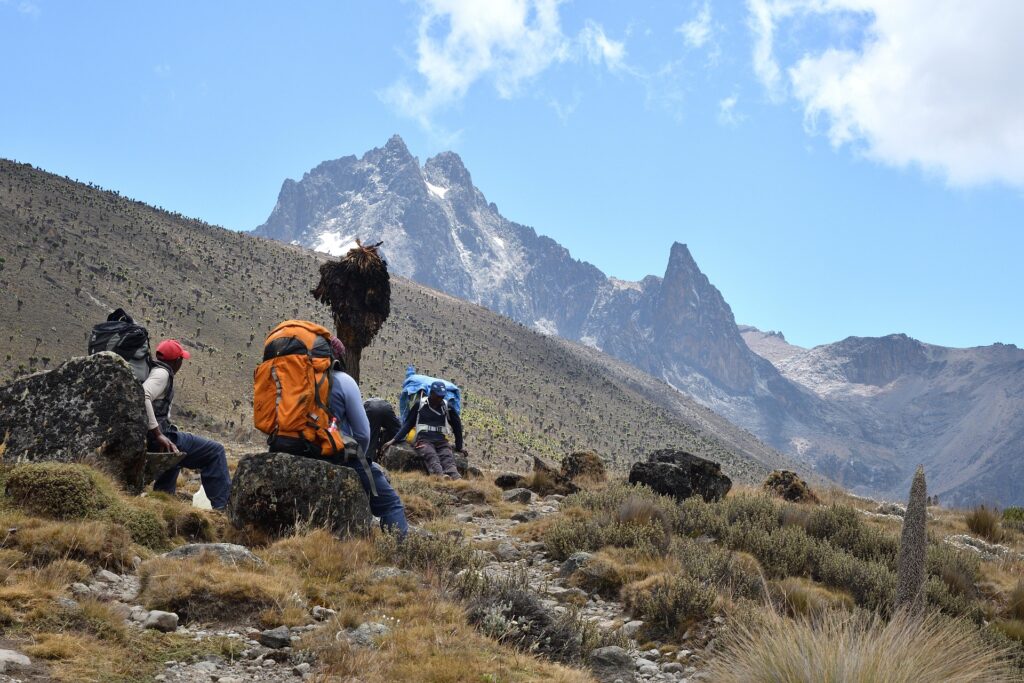
For international travellers looking for memorable and active places to visit in Kenya, Mount Kenya should be high on the list – not only for its natural beauty but also for the range of experiences it offers.
There are three main peaks: Batian, Nelion, and Lenana. While Batian and Nelion require technical mountaineering skills, Point Lenana (4,985m) is accessible to fit hikers and does not require specialised climbing gear. The trek to Lenana typically takes 4 to 5 days and passes through several ecological zones – from bamboo forests and giant lobelia-covered moorlands to rocky alpine terrain dusted with snow.
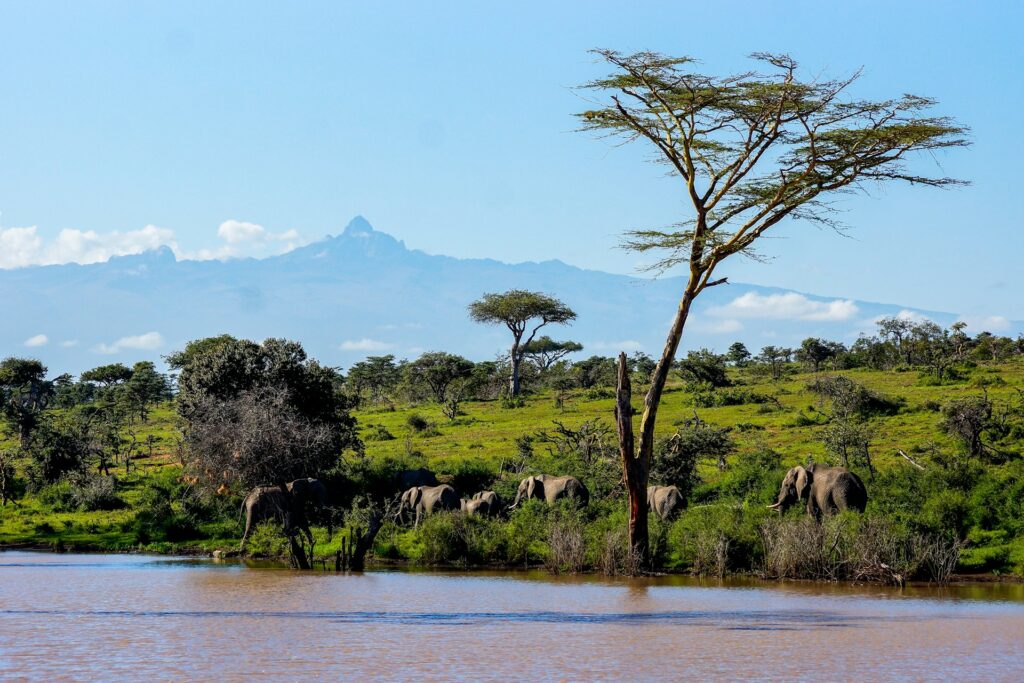
The mountain’s lower slopes are part of Mount Kenya National Park, which supports wildlife such as elephants, buffalo, giant forest hogs, and colobus monkeys. Birdlife is abundant as well, with species like the sunbird, lammergeier, and augur buzzard commonly spotted. The park’s quiet trails and forested foothills offer rewarding day hikes for visitors who may not be aiming for the summit.
There are several access routes, each with its own character:
- The Sirimon Route, from the northwest, is popular for its gradual ascent and scenic views.
- The Chogoria Route, from the east, is widely considered the most beautiful, passing by highland lakes and dramatic cliffs.
- The Naro Moru Route, from the west, is the most direct but also the steepest, often used for faster ascents.
In addition to its natural appeal, Mount Kenya holds deep cultural significance. The Kikuyu people consider the mountain sacred, believing it to be the home of Ngai, their god. Local guides often share these stories, adding a layer of cultural understanding to the trek.
Nairobi National Park
This is the only national park within a city in the entire world! Located just 7 kilometres from the city centre, Nairobi National Park is one of the most unique and easily accessible places to visit in Kenya. I mean, once you land in Kenya, you don’t have to travel far to get an introduction to the country’s wildlife and conservation efforts.
Covering 117 square kilometres, the park is home to a surprisingly rich variety of wildlife. Lions, leopards, hyenas, giraffes, buffalos, zebras, and over 400 species of birds can all be found here. It is also one of the best places in Kenya to see black rhinos in a secure, natural habitat. Despite being so close to the city, the park remains a functioning and carefully managed ecosystem.
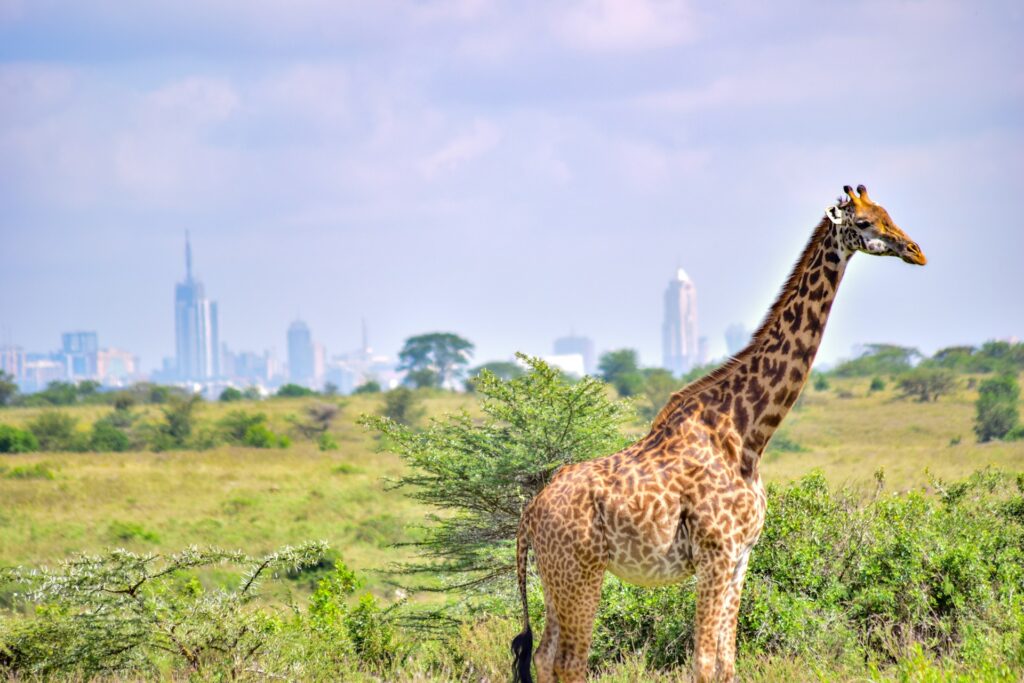
One of the park’s most iconic features is the visual juxtaposition of wildlife against Nairobi’s modern skyline. It’s not uncommon to photograph a herd of giraffes grazing in the foreground with high-rise office buildings in the background – an image that perfectly captures Kenya’s unique balance of progress and preservation.
Within the park is the David Sheldrick Wildlife Trust, a renowned elephant orphanage that rescues and rehabilitates orphaned baby elephants. Visitors can learn about elephant conservation and even witness the elephants being fed and cared for by their keepers – a heart-warming and educational experience, especially for families.
Nairobi National Park also offers well-maintained roads for self-drive safaris, guided tours, picnic sites, and walking trails in the Ivory Burning Site Monument area – a historically significant spot where Kenya first publicly burned ivory to take a stand against poaching.
So, maybe if you come to Kenya for the wildlife, before travelling to the Maasai Mara, Amboseli, or Tsavo, consider starting your trip by visiting Nairobi National Park. I guarantee you that you will love it!
Thomson’s Falls, Nyahururu
Located in the highland town of Nyahururu, approximately 3.5 hours by road from Nairobi, Thomson’s Falls is one of the more unexpected but striking places to visit in Kenya. The waterfall, which plunges 74 meters (243 feet) into a deep forested gorge, is formed by the Ewaso Narok River as it flows from the Aberdare mountain range. Its powerful, misty drop and lush surroundings make it a refreshing and visually dramatic stop, particularly for those exploring central Kenya.
The site is located just a few minutes from Nyahururu town, with a dedicated viewing area that offers panoramic vistas of the waterfall and the gorge below. On clear days, the surrounding Aberdare ranges can be seen in the distance, adding to the scenic charm.
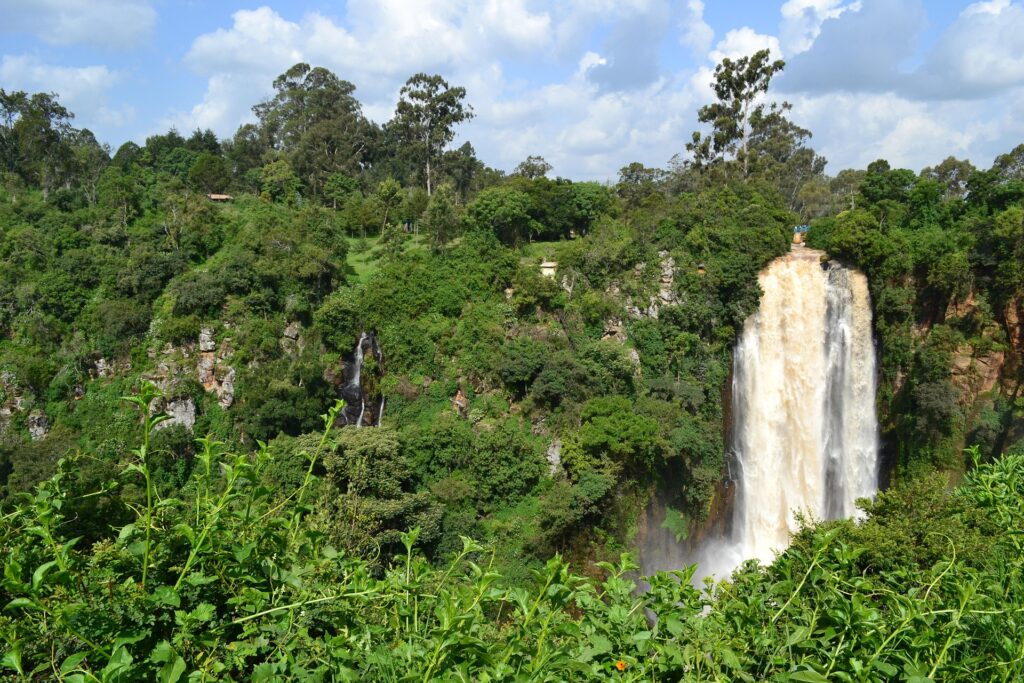
For those interested in more than just a photo stop, there’s a well-trodden trail that leads down to the base of the falls. It’s a moderately steep path, but local guides are available to escort visitors safely. The walk provides a closer look at the dense vegetation, birdlife, and the roaring energy of the water.
Thomson’s Falls also holds a place in Kenya’s colonial-era history. It was named in 1883 after Joseph Thomson, a Scottish geologist and explorer who was one of the first Europeans to walk from Mombasa to Lake Victoria. A nearby lodge—Thomson’s Falls Lodge—retains much of its early 20th-century design and offers travellers a chance to rest in a setting that feels steeped in time.
While it may not be a destination to build an entire itinerary around, Thomson’s Falls is an ideal detour or stopover on the way to Laikipia, Mount Kenya, Lake Nakuru, or Samburu. For travellers interested in scenic landscapes, photography, and lesser-known natural landmarks, it remains one of the more quietly impressive places to visit in Kenya.
Conclusion
Kenya’s reputation as a wildlife haven is well earned – but it is only one part of the story. Beyond the savannahs and all its inhabitants lies a country layered with diversity: alpine peaks, indigenous forests, white-sand beaches, cultural landmarks, and conservation-driven landscapes. For travellers willing to go beyond the typical game drive, Kenya offers a rich and varied experience that can be as adventurous, reflective, or luxurious as you choose.
These destinations – some well-known, others quietly tucked away – invite you to see the country through a different lens. I mean, after you explore them, you will find that Kenya has a rhythm and depth all its own. Also, remember that the most memorable journeys are the ones that surprise you!
So come for the wildlife – but stay for everything else!

